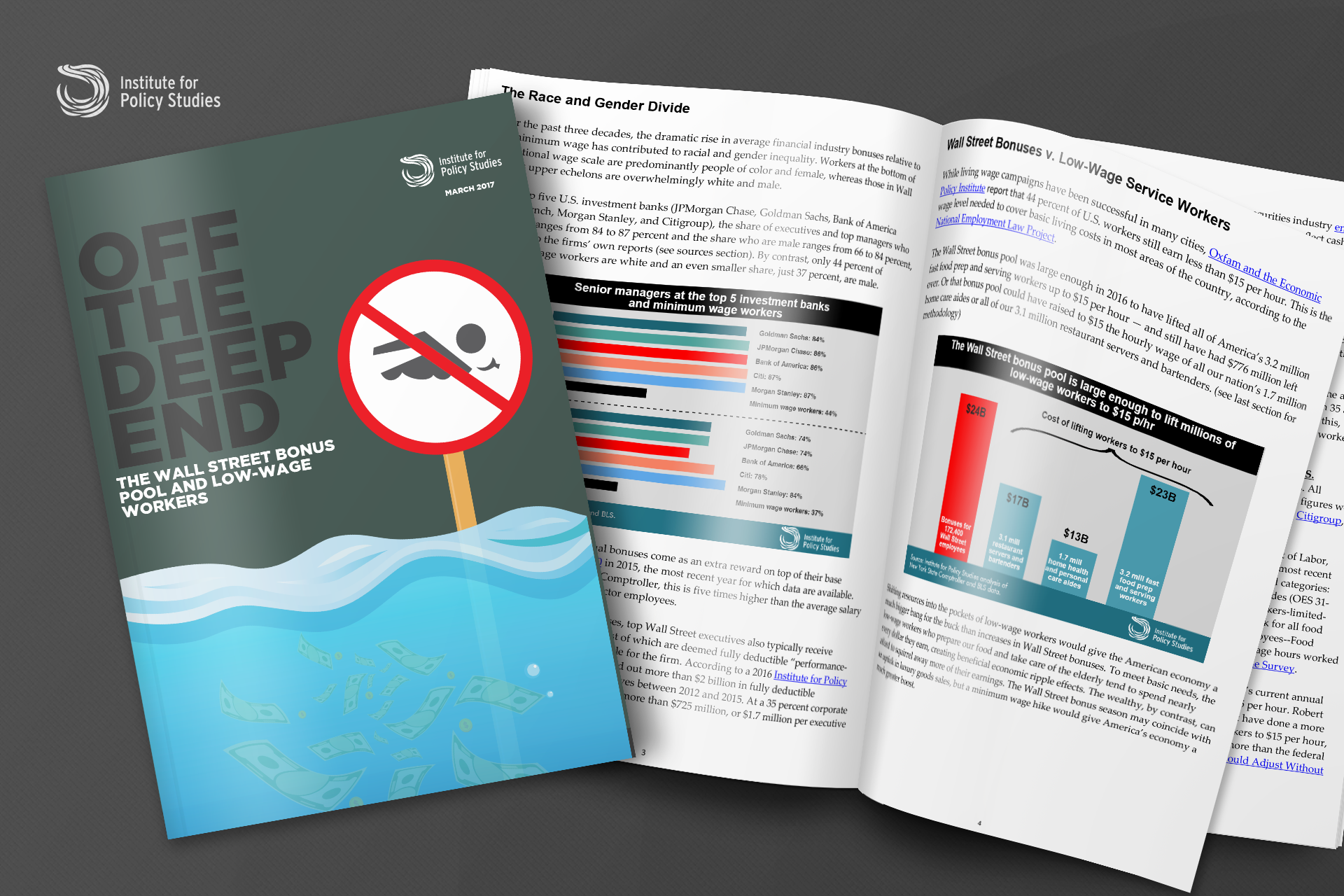 Wall Street banks handed out $23.9 billion in bonuses to their New York City-based employees last year, according to new figures from the New York State Comptroller. To put these figures in perspective, we’ve compared the Wall Street payout to low-wage workers’ earnings.
Wall Street banks handed out $23.9 billion in bonuses to their New York City-based employees last year, according to new figures from the New York State Comptroller. To put these figures in perspective, we’ve compared the Wall Street payout to low-wage workers’ earnings.
For full sources and methodology, download the full report [PDF].
Wall Street Bonuses v. Minimum Wage Earners
- The total bonus pool for 177,000 Wall Street employees was 1.6 times the combined annual earnings of all 1,075,000 U.S. full-time minimum wage workers.
- The average Wall Street bonus increased by 1 percent last year to $138,210. Since 1985, the nominal value of the average Wall Street bonus has increased 890 percent, whereas the minimum wage has risen only 116 percent.
The Race and Gender Divide
- The much faster increase in Wall Street bonuses has contributed to racial and gender inequality, since workers at the bottom of the wage scale are predominantly people of color and female, whereas those in the financial industry’s upper echelons are overwhelmingly white and male.
- At the five largest U.S. investment banks, the share of executives and top managers who are white ranges from 84-87 percent, and the share who are male ranges from 66-84 percent.
- Only 44 percent of minimum wage workers are white and 37 percent are male.
Wall Street Bonuses v. Low-Wage Service Workers
- The 2016 bonus pool held enough dollars to lift the pay of any one of these groups of low-wage workers up to $15 per hour:
- all of the country’s 3.1 million restaurant servers and bartenders,
- all 1.7 million home health and personal care aides, or
- all 3.2 million fast food preparation and serving workers
